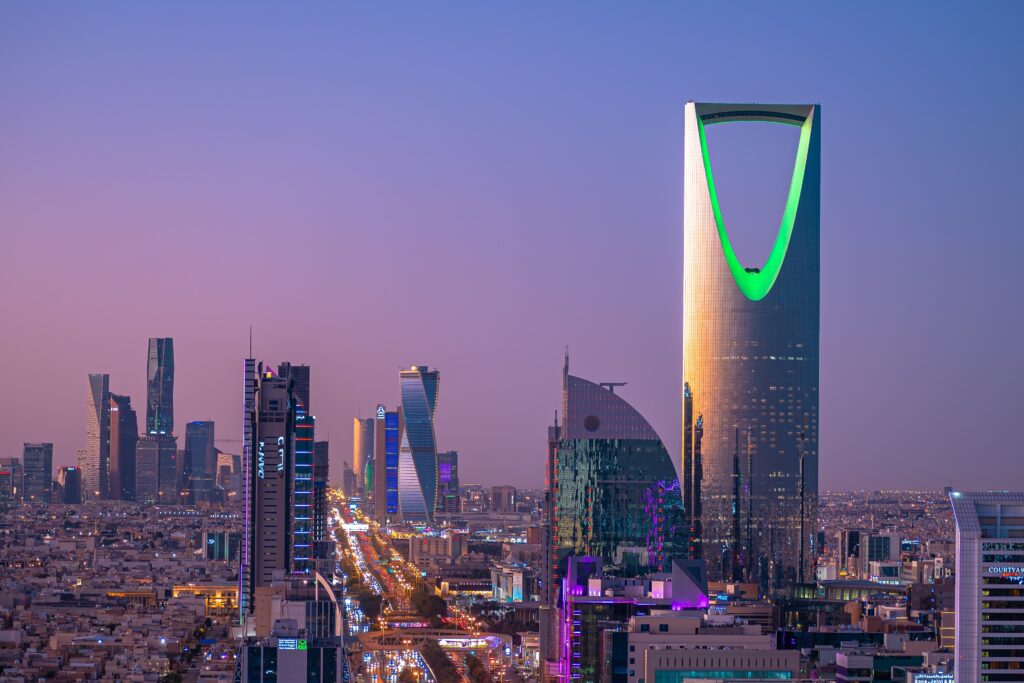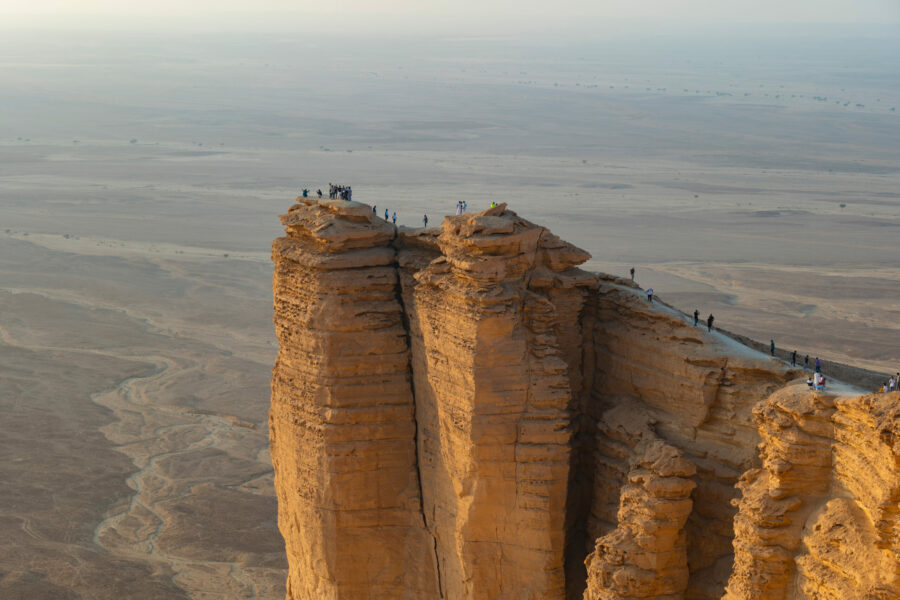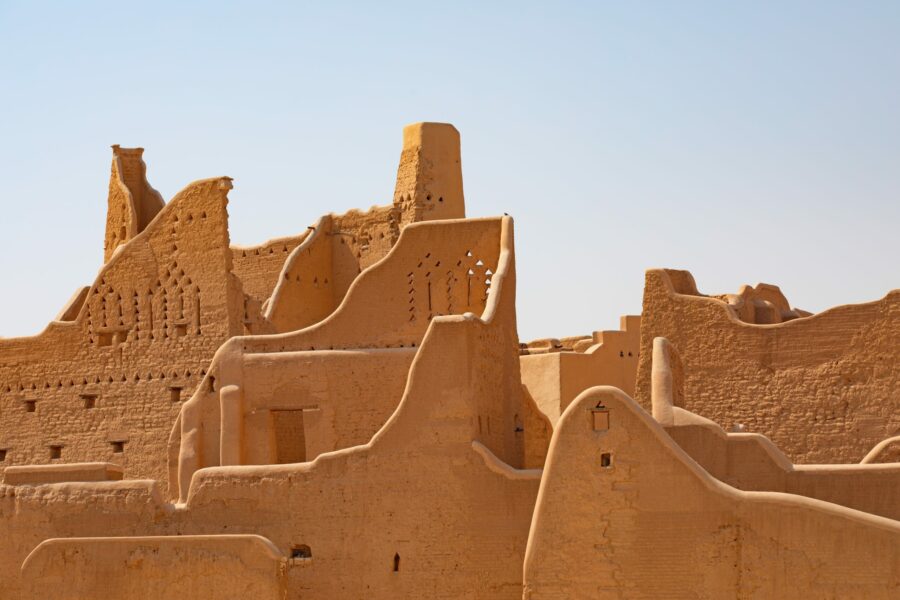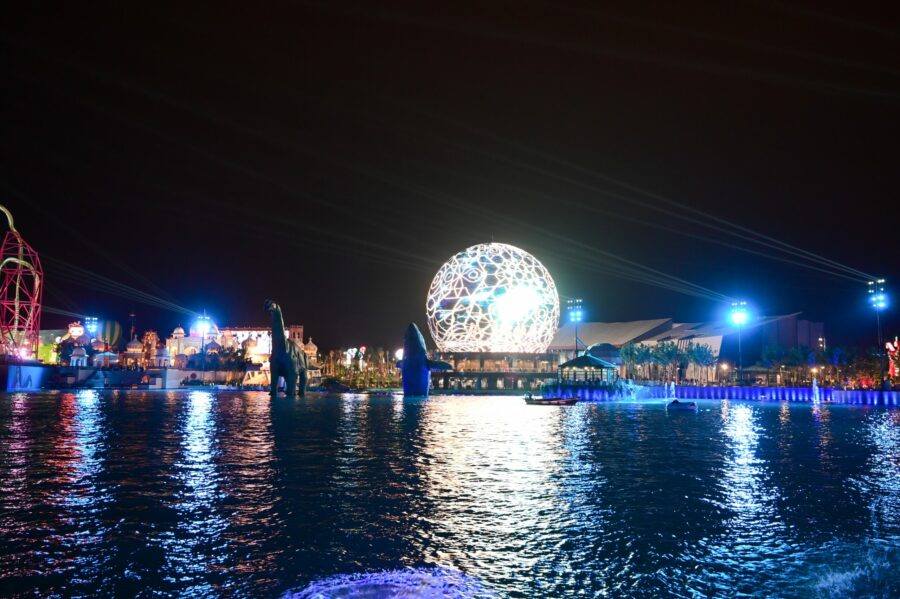
Saudi Arabia’s tourism ambitions are second to none. A country that until recently was closed to the world is opening its doors to the world. TravMagazine took a look at the capital Riyadh. For the other (emerging) destinations, also read the second part of this special. No, it’s not Dubai. Any comparison with the success story is flawed. Riyadh is nothing like Dubai, perhaps apart from its ambitions to grow bigger. But above all, there are differences to observe. The Saudi capital was not overrun with tourists at the end of May, in fact, I feel like one of the few. The tourist infrastructure is still in its infancy, if not baby shoes. The local population seems to be slowly getting used to the new relaxations. But then again, there are authentic Arabian experiences that are already unparalleled. And we’re not talking about shopping malls with air conditioning, although there are those too. There really is a lot of authentic beauty to see.
Once upon a time…
Back to the beginning. Riyadh, the capital of Saudi Arabia, is a modern and fast-growing metropolis with a rich history and diverse culture. There is also a significant Arab population, although many Indians and Pakistanis live here as well for the hard work. The location is known to be in the center of the Arabian Peninsula, and the climate is desert-like, with very (!) hot summers and mild winters. Temperatures can reach over 45 degrees Celsius in summer, while winters are relatively mild with temperatures rarely dropping below 10 degrees Celsius.  That makes the winter months by far the best and most logical time to visit. Bonus: the locals also enjoy the outdoors and all kinds of things are organized to make the most of the time. Pop concerts, sports events and other fun outings together form the ‘Riyadh Season’, the fun months on the calendar in which more and more international artists make an appearance.
That makes the winter months by far the best and most logical time to visit. Bonus: the locals also enjoy the outdoors and all kinds of things are organized to make the most of the time. Pop concerts, sports events and other fun outings together form the ‘Riyadh Season’, the fun months on the calendar in which more and more international artists make an appearance.
History
However, the history and nature are also particularly interesting. Riyadh originated from a small settlement called Hajr, which dates back to pre-Islamic times. The city has rapidly developed from a modest city to a modern metropolis in the twentieth century, especially after the establishment of the Kingdom of Saudi Arabia in 1932 by King Abdulaziz Al Saud. As the capital, Riyadh is home to the main government institutions and is an important financial and commercial center. As is well known, the country has long been a very closed book. Tourist access was almost impossible, and now it is. The most important thing is the enormous visa facilitation, which now makes a visit more attractive. Only the holy city of Mecca remains an exception, unless you are a Muslim. But for the rest, it has been welcomed. Under the Vision 2030 strategy, Riyadh aims to diversify its economy, with investments in non-oil sectors such as tourism, technology and finance.
Honest
But the elephant in the Arab room is, of course, clear. How does a country feel where women were not allowed to drive until June 2018? Where whippings stood on alcohol consumption and so on. Arch-conservative, that’s what it was, no more and no less. But the easing of restrictions has been in the news a lot in recent years. And the driving force is without a doubt Crown Prince Mohammed bin Salman. Relaxations for women, worldly events such as pop concerts for tourists and locals, and investments from very deep and well-filled pockets. Fossil fuels are 2023, tourism is the future.
‘Saudi Arabia has ambitious plans to develop and diversify its tourism sector’
And in today’s practice? A sample of the cold ground but a small majority of women wear a niqab, with which only the eyes can be seen. Even if they are cashier at the supermarket or out for dinner with friends in the mall. Because that is also possible, even as women together. Mad Max and Bad Boys 3 are playing in the mega cinema, there is a McDonalds, Starbucks, H&M and lingerie stores. But you won’t see bare bellies, yoga pants, or men in sweatpants with Gucci bags. But that’s in the eye. Visiting Saudi Arabia is an excellent excursion to discuss whether tourism can contribute to a better world… or not. I always opt for the former, without being able to say for sure. But there is no doubt that there is a lot to see. 
To do list
The King Khalid International Airport is one of the most important airports in the region, and will grow significantly in the coming years, with all the orders from the ambitious local airlines. As far as infrastructure is concerned, the city still has one major problem and that is traffic. Riyadh is currently building a comprehensive metro network to improve public transport and reduce traffic congestion. But until then, take your time to get from A to B. Uber (or Careem) works great and the taxis are also affordable. And without a doubt, Riyadh is a safe city. Of course, it is also a ‘dry’ city, which means that alcohol is not served anywhere and it is not allowed to be taken away. That is expected to be relaxed sometime in the next decade, but for the time being, everyone can enjoy mocktails or an alcohol-free beer. But what are we going to look at first? Some highlights during a short visit are easy to mention. The Masmak Fortress is a nice historical structure in the center of the city, near the souk which is on the small side and not particularly interesting. That is true of the National Museum of Saudi Arabia with extensive exhibits on the country’s history, culture, and heritage. The third must-see is Diriyah, a historic city and UNESCO World Heritage Site, known for its traditional architecture and important role in Saudi history. It is the original home of the Saudi royal family. And perhaps very remarkable: Boulevard City (and World), a neon-lit entertainment area with fun outings such as go-karting, a football experience, fast food and all kinds of other worldly entertainment.  The eye-catcher of the city, and a bit of the symbol of the modern city, is the Kingdom Tower, also known as the Al Mamlaka Tower. The building has a unique design with a striking opening at the top, which resembles an inverted parabolic arch according to the architects, but also a bottle opener in fairness. The tower is 302.3 meters high and has 99 floors. It is one of the tallest buildings in Saudi Arabia and a landmark in Riyadh’s skyline. One of the most notable features of the Kingdom Tower is the Sky Bridge, a 56-meter-long bridge that connects the two sides of the opening at the top of the tower. The Sky Bridge offers spectacular panoramic views of the city and is a popular tourist attraction. It is also the location of the best hotel in the city, the Four Seasons at Riyadh Center. Although other hotel brands are present, the hotel is known as the place where celebrities and locals like to stay or spend time. For a long time, it was the home of top footballer Ronaldo, who plays in the local top team Al Nassr. The lower part of the tower contains the Kingdom Centre Mall, an exclusive shopping mall with numerous international brands, as well as local specialties such as Oud perfumes and gold.
The eye-catcher of the city, and a bit of the symbol of the modern city, is the Kingdom Tower, also known as the Al Mamlaka Tower. The building has a unique design with a striking opening at the top, which resembles an inverted parabolic arch according to the architects, but also a bottle opener in fairness. The tower is 302.3 meters high and has 99 floors. It is one of the tallest buildings in Saudi Arabia and a landmark in Riyadh’s skyline. One of the most notable features of the Kingdom Tower is the Sky Bridge, a 56-meter-long bridge that connects the two sides of the opening at the top of the tower. The Sky Bridge offers spectacular panoramic views of the city and is a popular tourist attraction. It is also the location of the best hotel in the city, the Four Seasons at Riyadh Center. Although other hotel brands are present, the hotel is known as the place where celebrities and locals like to stay or spend time. For a long time, it was the home of top footballer Ronaldo, who plays in the local top team Al Nassr. The lower part of the tower contains the Kingdom Centre Mall, an exclusive shopping mall with numerous international brands, as well as local specialties such as Oud perfumes and gold.
Edge of the world
But the absolute highlight, also literally, is an excursion to the ‘Edge of the World’, known locally as Jebel Fihrayn, and one of the most spectacular natural sights in Saudi Arabia. It is located about 90 kilometers northwest of Riyadh and is part of the Tuwaik Ridge. It’s called ‘Edge of the World’ because of its dramatic cliffs that end abruptly and overlook a vast, empty desert plain. The view from the cliff gives visitors the feeling of standing at the edge of the world. The cliffs are millions of years old and consist of limestone and other sedimentary rocks.  The geological formations are impressive. In the area you can spot various wild animals, such as camels and different bird species. Although it is not directly accessible by paved roads, it is possible to get there by 4×4 vehicle. It is advisable to join an organized tour due to its remote location and challenging terrain conditions. Allow about eight hours for an excursion, and bring good shoes and plenty of storage space for the photos on your phone.
The geological formations are impressive. In the area you can spot various wild animals, such as camels and different bird species. Although it is not directly accessible by paved roads, it is possible to get there by 4×4 vehicle. It is advisable to join an organized tour due to its remote location and challenging terrain conditions. Allow about eight hours for an excursion, and bring good shoes and plenty of storage space for the photos on your phone.
Fast
Riyadh is a city that is changing very quickly. And that all fits in with the Vision 2030 and the associated Future Plans. Riyadh is undergoing numerous infrastructure and urban development projects, including Qiddiya (a large recreation and entertainment complex) and the Diriyah Gate (a culture and heritage project). As part of Vision 2030, there is a strong investment in developing tourist attractions and thus easing visa rules to attract more international tourists. And that applies to the whole country. Saudi Arabia has ambitious plans to develop and diversify its tourism sector as part of its broader Vision 2030 strategy, which aims to reduce reliance on oil revenues. You may have already heard; NEOM is to become a futuristic megacity in northwestern Saudi Arabia, planned as a hub for innovation, technology and sustainability. NEOM includes several sub-projects, such as THE LINE, a linear city without roads or cars, and Oxagon, a floating industrial city. The Red Sea Project is a luxury tourism project along the Red Sea coast, which will include a series of pristine islands, coral reefs and desert landscapes. The project focuses on sustainable tourism initiatives and aims to become one of the top destinations in the world for ecotourism. And then there’s Qiddiya, a large recreation and entertainment complex near Riyadh, intended to become the largest entertainment city in the world. Of course, there are question marks over Saudi Arabia, which is still unknown to many. And frankly, there’s only one way to answer it. Go and see for yourself. Because Saudi Arabia is coming and you want to see that before it gets really busy. What do you know about Oman, Ras al Khaimah and Sharjah? Click here for part two of this story.
